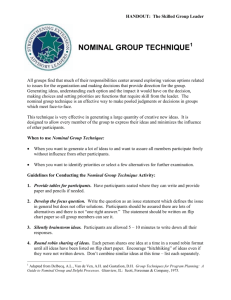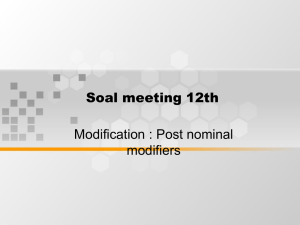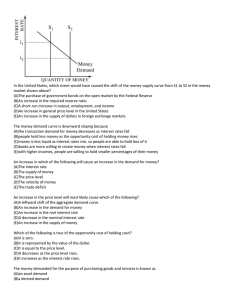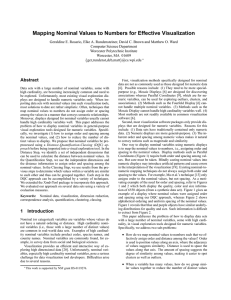Nominal group technique (opens in a new window)
advertisement
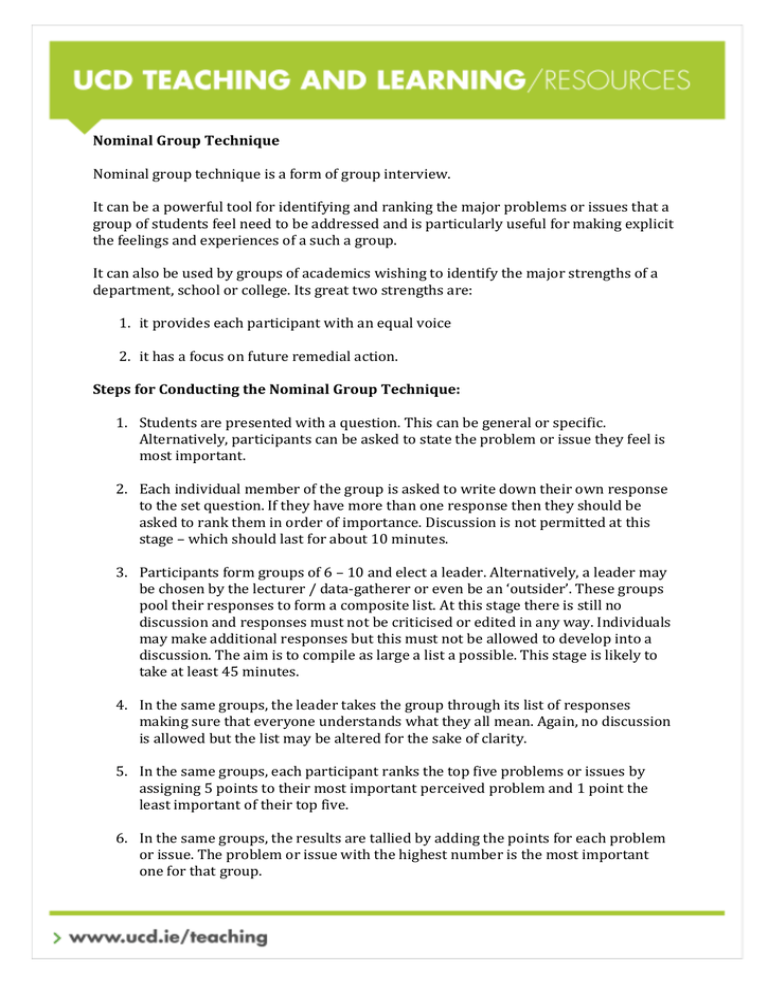
Nominal Group Technique Nominal group technique is a form of group interview. It can be a powerful tool for identifying and ranking the major problems or issues that a group of students feel need to be addressed and is particularly useful for making explicit the feelings and experiences of a such a group. It can also be used by groups of academics wishing to identify the major strengths of a department, school or college. Its great two strengths are: 1. it provides each participant with an equal voice 2. it has a focus on future remedial action. Steps for Conducting the Nominal Group Technique: 1. Students are presented with a question. This can be general or specific. Alternatively, participants can be asked to state the problem or issue they feel is most important. 2. Each individual member of the group is asked to write down their own response to the set question. If they have more than one response then they should be asked to rank them in order of importance. Discussion is not permitted at this stage – which should last for about 10 minutes. 3. Participants form groups of 6 – 10 and elect a leader. Alternatively, a leader may be chosen by the lecturer / data-gatherer or even be an ‘outsider’. These groups pool their responses to form a composite list. At this stage there is still no discussion and responses must not be criticised or edited in any way. Individuals may make additional responses but this must not be allowed to develop into a discussion. The aim is to compile as large a list a possible. This stage is likely to take at least 45 minutes. 4. In the same groups, the leader takes the group through its list of responses making sure that everyone understands what they all mean. Again, no discussion is allowed but the list may be altered for the sake of clarity. 5. In the same groups, each participant ranks the top five problems or issues by assigning 5 points to their most important perceived problem and 1 point the least important of their top five. 6. In the same groups, the results are tallied by adding the points for each problem or issue. The problem or issue with the highest number is the most important one for that group. 7. The same groups discuss the results and generate a final ranked list of five responses which will be reported to plenary. 8. In plenary, the groups come together and the ranked lists of responses are pooled. Overlapping items can be combined or composited. A second 5 point voting system is operated. The outcome is an overall ranking of issues / responses which reflects the concerns of the whole group. 9. Participants are asked to brainstorm possible future actions (e.g. changes in the course) that should follow. These are recorded and forwarded to the decision makers. It might prove necessary to vote on some of the suggestions for change to gauge the level of support.
